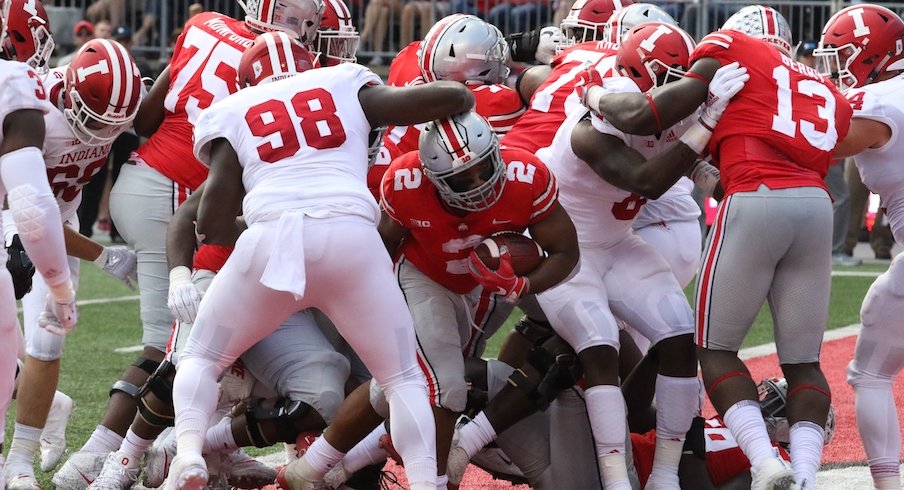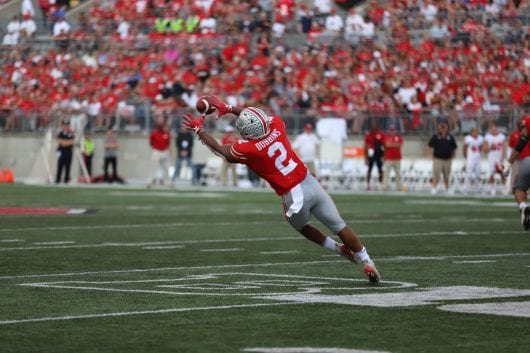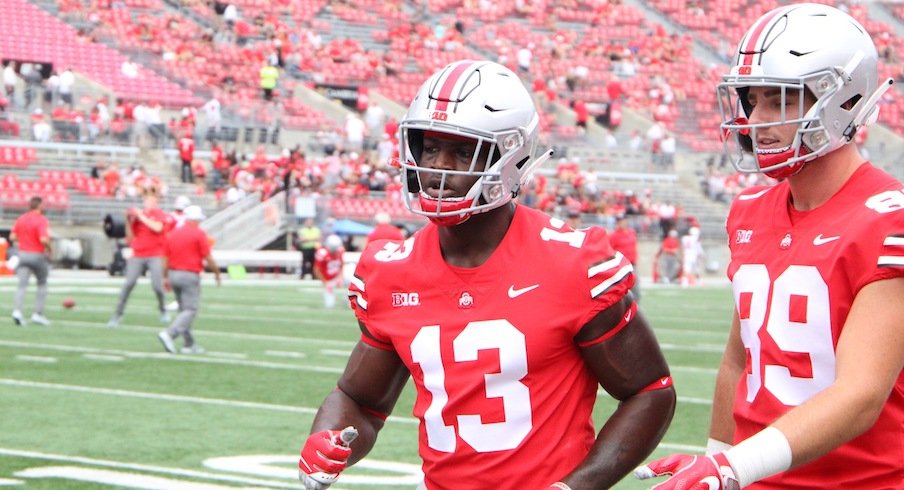Football: Running backs find a place in changing Ohio State offense
For Urban Meyer, third-and-short used to be automatic.
The Ohio State head coach would call a quarterback sneak or read play that would allow former Ohio State quarterback J.T. Barrett to easily get the first down, continuing the offensive drive and creating momentum.
For anything outside a third-and-short play, Meyer is confident in his quarterback, redshirt sophomore quarterback Dwayne Haskins, who has led Ohio State to the best statistical passing offense in the Big Ten, averaging 364.7 yards per game.
On paper, third-and-short should not be an issue. With Haskins behind center, the Ohio State offense utilizes what offensive coordinator Ryan Day deemed as a “two-headed monster;” sophomore and redshirt junior running backs J.K. Dobbins and Mike Weber.
However, this offense is changing. It’s moving away from the power-back offense that Weber and Dobbins had seen and excelled in in the past, and is moving more into a pass-heavy, pro-style approach in terms of pass protection and a receiving corps with the specialty of beating defenders in open space.
This change is something about which Meyer said he is worried.
“Third-and-one is tough right now. That’s another weakness,” Meyer said. “So a weakness right now is balance on offense and those short yardage [situations].”
With Dobbins and Weber leading the charge, Ohio State holds the No. 41 running game in the NCAA, averaging 201 yards per game.
However, the Ohio State offense is still averaging 49 points per game, something that running backs coach Tony Alford wants to focus on — not on how the offense might be getting those points.
“Our guys aren’t worried about that. I’m not,” Alford said. “The key component is to win and when you do it at all costs, you do what you need to do. If that means we are throwing the ball, if that means we are running the ball, if we are running screens, whatever, as long as we are winning games. And that’s what we are here to do.”
Alford said the running back room has adapted to the offense Haskins has run over the first six games of the season, calling the Ohio State offense more of a drop-back team that uses screens as a way to beat any aggressive defensive front.
In six games, Dobbins and Weber have adapted, combining for 17 receptions, averaging a combined 29.3 receiving yards per game and each recording a touchdown catch this season.
In the traditional running game, the game that both Weber and Dobbins had become used to, Ohio State has not found as much success. Both backs’ yards per carry average has decreased from a season ago, with Dobbins averaging 4.7 yards per carry after breaking out for 7.2 yards per rush last season.
With an offensive line that has protected Haskins remarkably well through six games, allowing 1.3 sacks per game, which is tied with Michigan for second-fewest in the Big Ten, Meyer said protecting backs in the run game is a bit different, and has to improve.
“We got to do a better job as coaches and better job, obviously, with players, just executing the run game,” Meyer said. “Because it’s not always that. It’s not always a loaded box.”
Entire article:
https://www.thelantern.com/2018/10/...-find-a-place-in-changing-ohio-state-offense/









